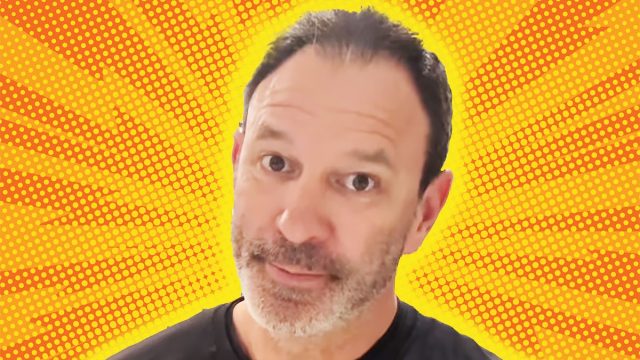4 Signs You Are Eating Too Much Protein to Lose Fat

Most of us have heard that increasing protein is essential for weight loss, but there's actually such a thing as overdoing it. Jon Williams, a fat loss expert who helps men and women lose 20-plus pounds of body fat, explains that while protein is crucial for muscle maintenance and metabolism, excessive amounts can sabotage your progress. Keep reading to discover the telltale signs that your protein intake might be hindering rather than helping your fat loss journey.
Your Digestive System Is Revolting
Having constant bloating, gas, or bathroom issues? Your protein intake might be the culprit. "When you focus too heavily on protein, you often shortchange your fiber intake, which wreaks havoc on your digestion," Jon explains in his post. High-protein diets frequently lead to insufficient fiber consumption, creating an imbalance that your gut immediately notices. Without adequate fiber to move things along, your digestive system simply can't function optimally, leading to uncomfortable symptoms that signal something's wrong.
You're Constantly Thirsty
Feel like no amount of water satisfies your thirst? According to Jon, "Your body requires significantly more fluids to process protein properly, and many people underestimate how much additional water they need." The dehydration from excessive protein consumption can manifest as fatigue, headaches, or dizziness—symptoms many people mistakenly attribute to other factors. If you're drinking what should be enough water yet still feel parched, your protein-heavy diet might be the real reason.
The Scale Is Moving in the Wrong Direction
Surprised to see weight gain despite watching calories? Jon points out that "excess protein doesn't magically disappear—your body converts it to fat if you're consuming more than you need." While protein is essential for preserving muscle during fat loss, it still contains calories that count toward your daily total. If your weight is creeping up despite maintaining what you believe is a calorie deficit, the extra protein could be pushing you into a surplus without you realizing it.
Your Workouts Feel Like a Struggle
Finding yourself unexpectedly fatigued during exercise? "When people go overboard with protein, they often reduce carbs too much, which leaves them without proper fuel for intense workouts," Jon says. This imbalanced approach can lead to noticeable decreases in performance and energy levels. Your body needs carbohydrates for high-intensity activities, and without them, your training suffers. The exhaustion you feel might be a direct result of prioritizing protein at the expense of other essential macronutrients.
Finding Your Protein Sweet Spot
Balance is key when it comes to protein consumption. Jon recommends "aiming for 0.7-1 gram of protein per pound of body weight, which provides enough for muscle maintenance without going overboard." This range gives your body what it needs for recovery and metabolism without risking the negative side effects of excessive intake. Finding your personal protein sweet spot ensures you get the benefits without undermining your progress.
Creating a Sustainable Calorie Deficit
Protein is just one piece of the fat loss puzzle. "Tracking your intake initially helps develop awareness, but focusing on whole foods makes maintenance much easier long-term," Jon explains in another post. A sustainable approach combines reasonable protein intake with plenty of vegetables, adequate hydration (aim for half an ounce of water per pound of body weight), and portion control. These fundamental habits create the calorie deficit needed for fat loss while keeping your energy levels stable and digestion running smoothly.
Balancing Your Macronutrients
Smart fat loss requires considering all macronutrients, not just protein. "The most successful clients understand that protein, carbs, and fats all play important roles in both performance and fat loss," Jon says. Rather than demonizing any macronutrient, focus on quality sources and appropriate amounts of each. This balanced approach provides your body with everything it needs to lose fat effectively while maintaining energy, supporting workouts, and preserving muscle mass—the true formula for lasting results. And if you enjoyed this article, don't miss these 8 High-Protein Foods with Nearly Zero Calories That Melt Fat.




